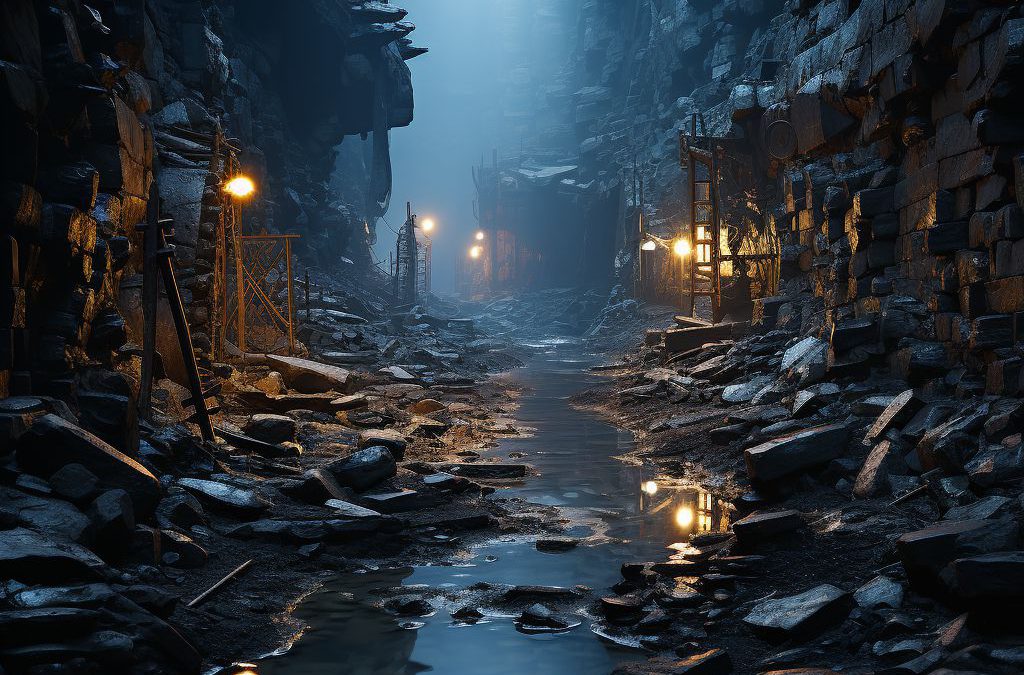As our planet’s demand for energy continues to increase at an unprecedented rate, more and more people are turning to geothermal energy as a sustainable and cost-effective alternative to traditional fossil fuels. But, the question remains: can you drill for geothermal energy anywhere? The answer is not as simple as a yes or no, as the feasibility and success of geothermal drilling depends on a variety of geological, technical, and regulatory factors. In this article, we’ll explore the ins and outs of geothermal drilling, and uncover the truth behind where and how to harness this powerful renewable energy source.
Tabe of Contents
- 1. Understanding Geothermal Energy and Its Potential
- Can You Drill for Geothermal Energy Anywhere?
- 2. The Importance of Geological Features in Geothermal Drilling
- 3. Challenges of Drilling for Geothermal Energy in Non-Volcanic Regions
- 4. Assessing Site Suitability: Factors That Affect Geothermal Drilling
- 5. Emerging Technologies for Geothermal Drilling: Innovations and Prospects
- Can You Drill for Geothermal Energy Anywhere?
- People Also Ask:
- Conclusion:
1. Understanding Geothermal Energy and Its Potential
Can You Drill for Geothermal Energy Anywhere?
Geothermal energy is a renewable source of energy derived from the natural heat of the earth’s core. This type of energy has the potential to provide a clean and sustainable alternative to traditional sources of energy such as fossil fuels. The geothermal energy is harnessed by drilling down into the earth’s crust to tap into the hot water and steam reservoirs found there. The heat energy is then converted into electricity and used to power homes, factories, and businesses.
According to the Geothermal Energy Association, geothermal energy has significant potential for powering the planet. It has been estimated that the earth has enough geothermal energy to provide 10,000 times more than the world’s current energy needs. However, geothermal energy is currently only used to produce about 2% of the world’s electricity. This is due to the high cost of drilling for geothermal energy and the limited availability of suitable drilling sites.
Furthermore, not all geographical areas are suitable for drilling for geothermal energy. The availability of geothermal resources depends on geological features such as the age of the rocks, the permeability of the earth’s crust, and the availability of hot water and steam reservoirs. In the next section, we will discuss the importance of geological features when drilling for geothermal energy.
2. The Importance of Geological Features in Geothermal Drilling
Geothermal energy is heat energy that is harnessed from the earth’s crust. The process of extracting geothermal energy involves drilling deep into the Earth’s crust and accessing hot water and steam. However, not all locations are suitable for geothermal drilling, as the presence of certain geological features is crucial for the successful extraction of geothermal energy.
Geological Features Necessary for Geothermal Drilling
Fault Systems: Fault systems are critical for the successful extraction of geothermal energy. The presence of active or dormant fault systems allows for the easy movement of hot fluids, which can be extracted and used to generate energy. Fault systems provide the necessary permeability that allows hot water to flow to the surface, where it can be harnessed.
Volcanic Activity: Volcanic areas have long been associated with geothermal energy production. This is because they are formed by tectonic plate boundaries and have a high concentration of magma and hot water. The high temperature and pressure in these areas provide the necessary conditions for geothermal energy production. Additionally, the presence of hot springs, fumaroles, and geysers are indicators of geothermal potential.
Why These Features are Necessary
Geological features such as fault systems and volcanic activity are necessary in geothermal drilling because they facilitate the movement of hot water and steam to the Earth’s surface, where they can be harnessed for energy production. Fault systems provide the necessary permeability for the hot fluids to flow to the surface, while volcanic activity creates the necessary high temperatures and pressure to generate geothermal energy.
Without these geological features, geothermal drilling may not be successful. It is essential to assess the presence of these features before commencing drilling activities to minimize the risk of failure. Site suitability assessments involve analyzing various factors, including geology, soil properties, and hydrological features, to determine the potential for geothermal energy production.
3. Challenges of Drilling for Geothermal Energy in Non-Volcanic Regions
Geothermal energy refers to the heat energy generated and stored in the earth. Although geothermal energy is available in many locations, drilling for geothermal energy in non-volcanic regions can pose significant challenges. This section discusses some of these challenges and how they impact geothermal energy production.
One of the main challenges of drilling in non-volcanic regions is the lack of permeability. In contrast to volcanic regions where permeability is high due to the presence of fractures, faults, and other geological features, non-volcanic regions feature dense and impermeable rocks. This makes it difficult to extract geothermal fluids, which are located in the pores of rocks. Consequently, drilling deeper may not necessarily yield better results, and the amount of energy that can be produced may be limited.
Another challenge that arises in drilling for geothermal energy in non-volcanic regions is the high cost of drilling. Given the lack of permeability and the need to drill deeper to access geothermal fluids, drilling costs can be high. This is particularly true when drilling in hard and dense rock formations, where drilling equipment can experience wear and tear, leading to higher maintenance costs. In some cases, exploring for geothermal energy in non-volcanic regions may not be economically feasible.
In conclusion, although geothermal energy is available in many locations, drilling for geothermal energy in non-volcanic regions can pose significant challenges. The lack of permeability and increased drilling costs are major hurdles that must be overcome if geothermal energy production in these regions is to be successful. As such, it is important to assess site suitability carefully and explore new technologies that can address these challenges.
4. Assessing Site Suitability: Factors That Affect Geothermal Drilling
Geothermal energy is a renewable energy source that uses the heat from the earth’s interior to generate electricity. However, not all locations are suitable for geothermal drilling. Several factors affect the feasibility of drilling for geothermal energy, such as:
- Temperature gradient: The temperature gradient refers to the rate at which the temperature increases as you go deeper into the earth. Geothermal drilling requires a high temperature gradient for efficient energy production. The ideal temperature range for drilling is between 150°C to 300°C.
- Geological features: The geological features of a location play a crucial role in determining its suitability for geothermal energy. The presence of faults, fractures, and permeable rocks can increase the flow of fluids and make it easier to extract heat from the earth.
- Water availability: Geothermal drilling requires a constant supply of water for the heat exchange process. The presence of an aquifer or water source near the drilling site is crucial for sustained operations.
- Distance to power grid: The distance between the drilling site and the power grid can affect the cost of electricity production. Sites that are nearer to the grid tend to be more feasible and cost-effective.
Before drilling for geothermal energy, it is vital to assess the site’s suitability based on these factors. A comprehensive feasibility study can help to determine the feasibility of drilling and the potential output of the geothermal energy system. The study should include geological surveys, geophysical studies, and drilling exploration.
5. Emerging Technologies for Geothermal Drilling: Innovations and Prospects
Can You Drill for Geothermal Energy Anywhere?
As geothermal energy becomes more crucial in meeting the world’s energy demands, the development of innovative drilling techniques has also accelerated. These emerging technologies offer exciting new possibilities for the expansion of geothermal power generation.
5.1 Advanced Drilling Techniques
Advanced drilling techniques have been developed to counter the challenges posed by non-volcanic regions, slow geological formations, and hard rock beds. Some of these techniques include directional drilling, high-temperature drilling, and geothermal well construction. Directional drilling provides the ability to drill vertically, horizontally, or at various angles, which increases drilling accuracy and improves access to geothermal reservoirs. High-temperature drilling techniques, such as two-phase drilling, allow for the drilling of deeper, hotter wells. New geothermal well construction methods have also been developed, such as drillable liner technology and multilateral well drilling, which improve well integrity and reservoir access.
5.2 Fracturing Techniques
Another innovation in geothermal drilling is the application of hydraulic fracturing techniques to harness the heat from low-permeability rock formations. Experiments in hydraulic fracturing, or hydrofracking, which has been widely used in the oil and gas industry, have shown promising results in hot dry rock (HDR) drilling, a geothermal method that involves fracturing hot rocks deep underground and circulating water to extract the heat.
5.3 Enhanced Geothermal Systems
Enhanced Geothermal Systems (EGS) is a method that involves drilling deep into the earth’s crust and using hydraulic fracturing to create an artificial geothermal reservoir. This approach expands the potential for geothermal drilling to regions that were previously considered unsuitable, and allows for the possibility of generating geothermal energy anywhere in the world. Although this method is still in its infancy, governments and industry leaders are investing in EGS research and development, and its potential for the future of geothermal energy is considerable.
People Also Ask:
1. Is geothermal energy available everywhere?
Geothermal energy is available everywhere, but the quality and quantity of geothermal energy vary from one location to another. Some regions have high heat gradients, while others do not. Additionally, drilling for geothermal energy is not feasible in regions with hard rock layers or thick sediments.
2. Can you drill for geothermal energy in urban areas?
Drilling for geothermal energy in urban areas is possible, but it is challenging due to the high population density and cost of land. As a result, most geothermal systems in urban areas are ground-source heat pumps that use existing water wells.
3. Can you drill for geothermal energy on any land?
Drilling for geothermal energy is possible on any land that has a suitable geothermal resource. The areas with the highest potential for geothermal energy are regions with high heat flow and permeability, such as volcanic geothermal fields.
4. Are there any environmental concerns associated with drilling for geothermal energy?
Drilling for geothermal energy can cause potential environmental concerns such as the release of naturally occurring toxic gases, increased seismic activity, and the potential for contamination of groundwater. It is crucial to ensure proper environmental monitoring and management during the drilling process.
5. How deep do you need to drill for geothermal energy?
The depth required to drill for geothermal energy depends on several factors such as the geothermal gradient, rock formations, and the desired temperature. Generally, wells for geothermal energy are drilled to a depth of 1,500 to 3,000 meters.
Conclusion:
Geothermal energy is available in many parts of the world, but the quality and quantity of the resource vary from one location to another. While drilling for geothermal energy is possible on any suitable land, it may not be feasible in regions with hard rock layers or thick sediments. Additionally, there are potential environmental concerns associated with drilling for geothermal energy that need to be addressed. Overall, geothermal energy remains a promising source of renewable energy that can help reduce carbon emissions and provide a sustainable alternative to traditional energy sources.

Emergency Services Coordinator
Oliver leads our round-the-clock emergency repair services. His swift response and problem-solving skills provide peace of mind during urgent AC breakdowns, making your comfort his priority.

